With how powerful Canva is, we're only going to scratch the surface here. But our goal is to teach you a few tricks and secrets for designing the perfect logo using the free logo creator and design tool in this Canva Tutorial.
Note that we're going to do all of this with the free version of Canva - perfect if you're a small - or mid-sized business on a budget. You can always opt to pay for locked options for a very reasonable price.
This will also be helpful for social media marketing agencies, who typically have to create a ton of logos and graphics daily. If you’re an eclincher client, stay tuned for a way to do this right inside the app with the included Canva integration.
Let's make a professional and great logo for a fictitious company, just as an example. We'll pretend that the business is Grandma's Bakery, a local bakery where you can get the best treats in town.
(Psst! Be sure to read through to the end. We have a couple of hacks you probably haven't seen before.)
Canva Tutorial for Logo Design
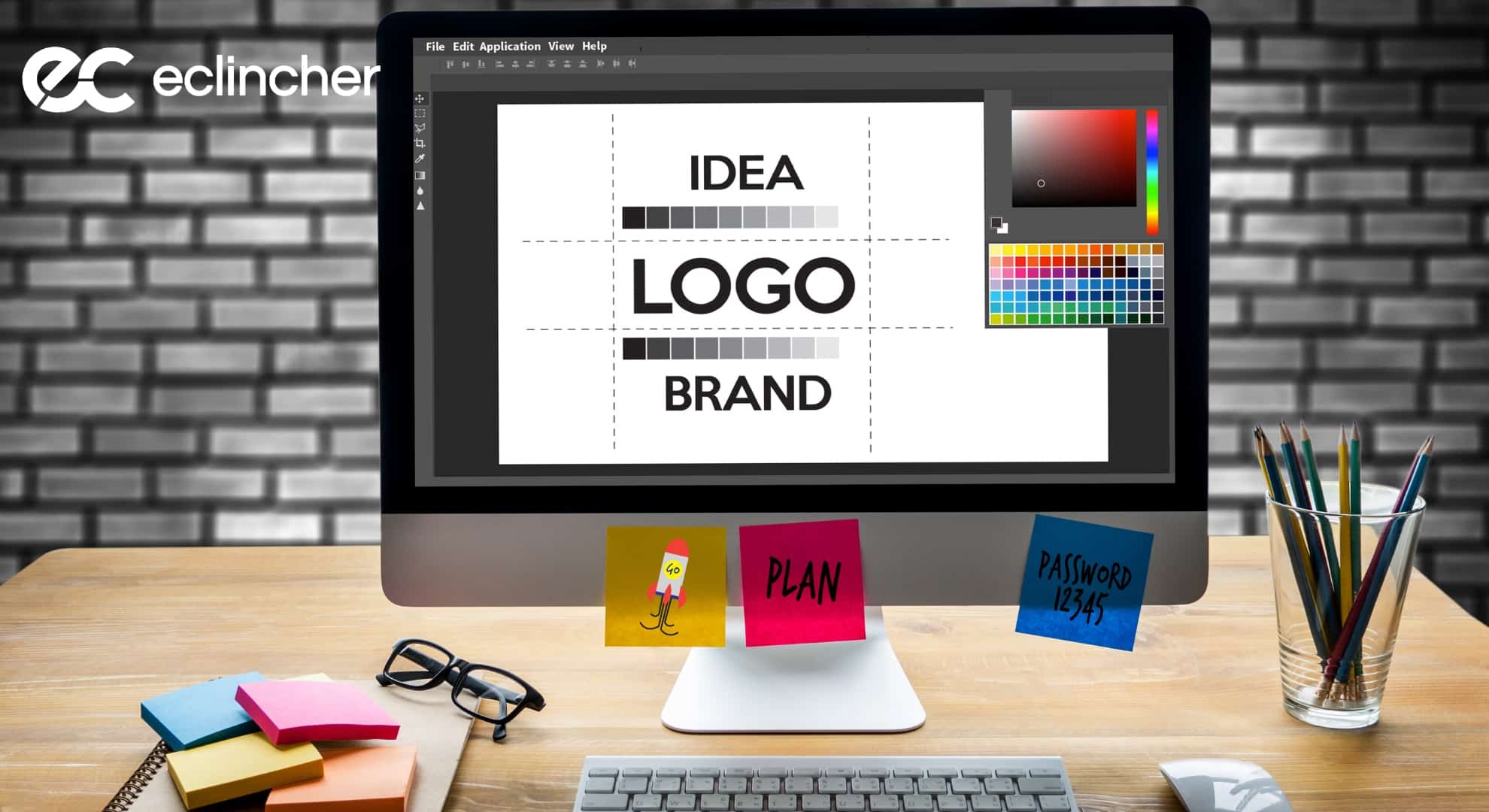
Creating a great logo is simple with Canva's massive library of professional templates and design features. Whether you're aiming for simple logos or more intricate designs, Canva offers everything you need to make your logo stand out. Good designers know the importance of color combinations and customization options, all of which are available in Canva. This tutorial will guide you through the steps to make your logo using Canva's intuitive tools and resources.
Select a Pre-Made Template
First, we want to show you an approach that requires minimal time and effort. Canva always has a free template for professional logos and a free logo maker tool. It also has almost unlimited logo template designs for a number of industries. Check this out. After logging in, I searched "logo," and this is what shows in the drop-down menu.
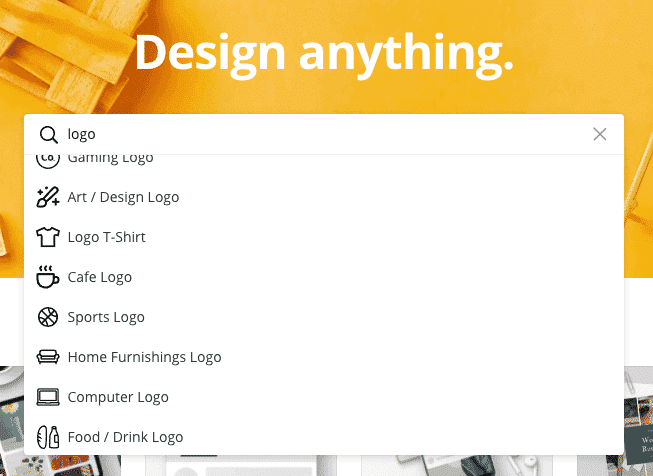
Bam! Right there, at the bottom of the screen, you'll see an option called Restaurant Logo. When we click on that, this is what we get.

And this is only part of their selection. Without having to do any work, Canva delivers plenty of themed templates with numerous customization options and can be downloaded within seconds, literally.
You can choose any of these and then customize them however you'd like. Here's the logo template I went with. At this point, I haven't made any edits.

All I had to do was change the name by clicking on the text box to edit it.
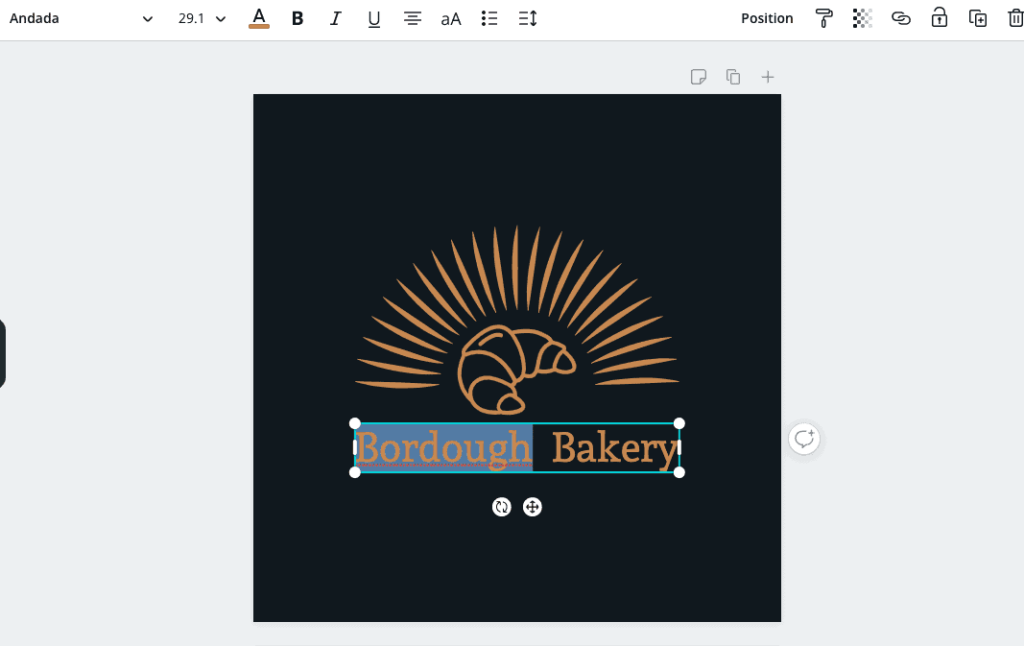
I deleted "Bordough" and changed it to "Grandma's," and there's my custom logo.
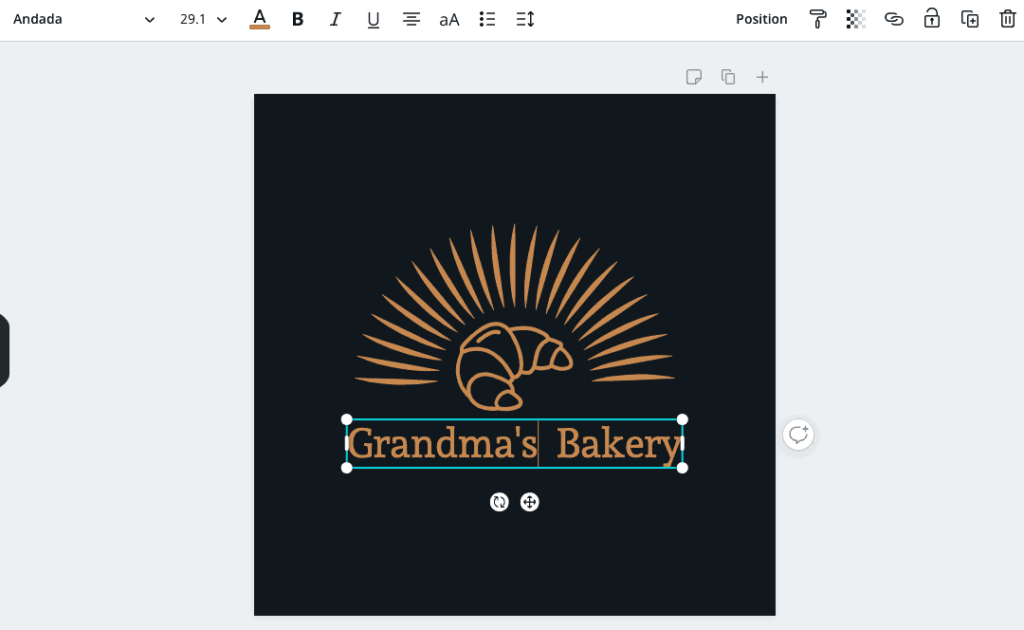
These Canva free templates are an excellent option if you're looking for something quick, easy, and straightforward. However, bear in mind that you can also use these as inspiration or a starting point. Canva still gives you the option to customize each element however you see fit.
For example, we can change the background color to turquoise. You can do this by clicking on the background and then clicking the color square toward the top left corner. This opens up all of Canva's color options. Knowing how to use Canva can take your graphics to the next level.
From there, you select the one you want.
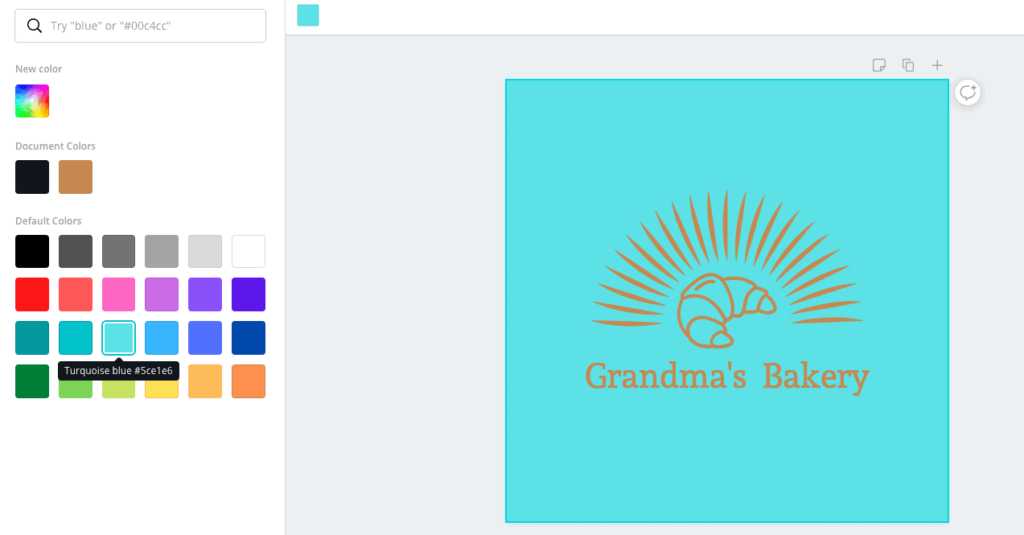
We could also change the croissant to a cupcake. (Is this making anybody else hungry right now?) In the left-hand menu, click Elements and then search "cupcake." The search results show several free and paid options. The paid options have a crown next to them.
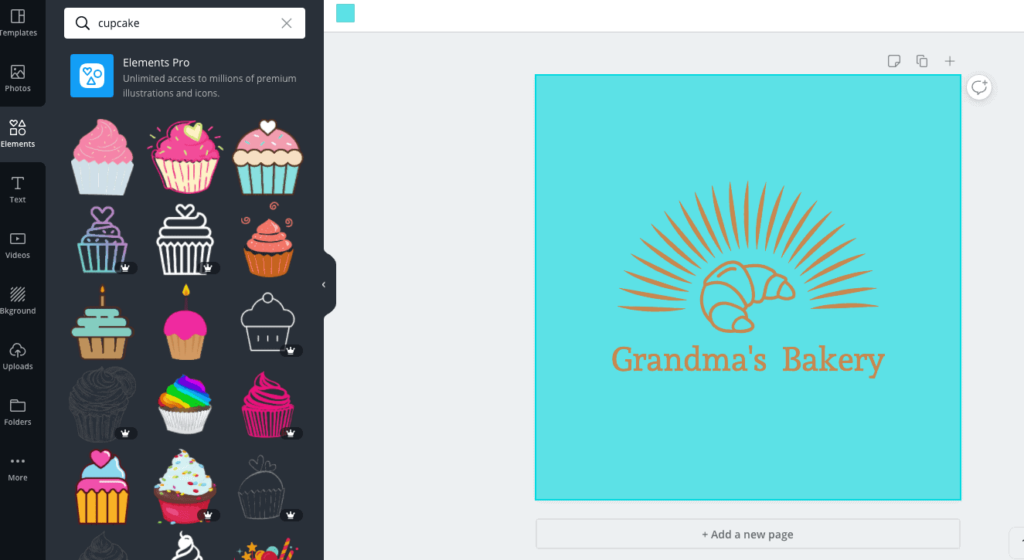
To replace the croissant, click on it and then hit Delete on your keyboard (or you can use the trashcan icon in Canva, toward the top right corner). From there, all you do is drag and drop the cupcake you want from Elements onto your draft.
Tip: Canva is all about drag-and-drop, making it easy to add elements and move them around your canvas.
I resized mine to make it a little smaller by dragging one of the corners of the cupcake inward. Now it fits better under those stripes. Here's what I'm left with.

Grandma doesn't sell croissants but she does make a mean cupcake, so this almost unique logo will be perfect for her.
Remember, you can modify just about anything. You can change the font, the font color, the orientation of the design elements, the sizes of the elements, and the striped design over the cupcake. The finished result might look nothing like the template, but you'll have had a much easier time arriving at that destination.
Canva templates are a cool option for those days when you sit at your computer and think, "I seriously have no idea where to even start." You don't have to love the template, but if nothing else, it gives you something to work with instead of needing to start from scratch, which can be so incredibly difficult and time-consuming.
Let's go back to a blank canvas and play around more with logos. I'm going to stick with a perfect square canvas. On the Canva homepage, I'm going to click Create Design in the Canva logo maker and then the first option, Custom Dimensions.

Next, let's do 400 x 400 and click Create Design.

Create Text That Pops
Finding the balance between text that's memorable without being too "in-your-face" can be tricky. Often, when you try too hard to get people's attention with text, you end up turning them off completely. We've got a few tricks, and Canva hacks to help you along the way.
Click on the Text option in the left-side menu and select Heading. This is what we'll work from for now.

If you've ever used Photoshop or something similar, maybe you've played around with adding an outline to your text. This comes in handy because depending on the color scheme and patterns you're using for your custom logo background, the text can get lost in it. Here's one example.
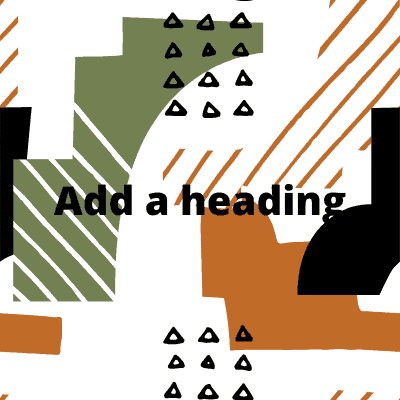
The black text could work just fine, but you'll notice how things get a little crazy when it overlaps with a background like this.
This is when that outline will help. While Canva doesn't have a pre-set option for this, there's a neat little workaround that we had to include in our Canva tutorial, because not many people know about it. Click on the heading and then click on the Duplicate button in the top right.
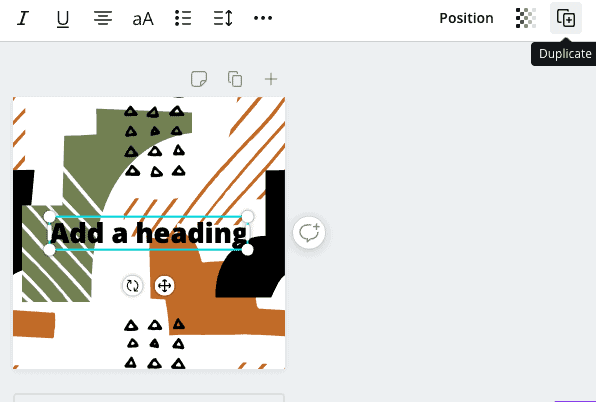
This will give you a second carbon copy of the current heading. Next, make the copied heading white.
You should have one black heading and one white heading.

Here's where the real magic happens. Drag and drop the white heading so that it's directly over the black version (the original). Then, click on Position in the top right corner and click Backward.
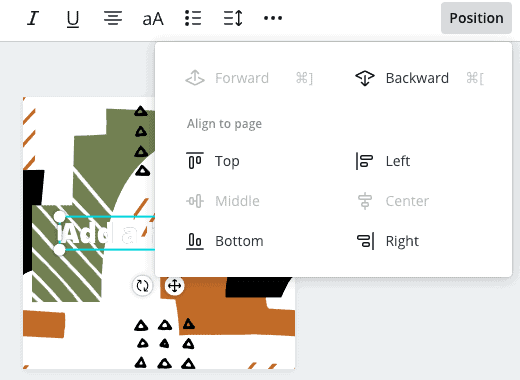
When you do that, the white version moves behind the black one and you're left with this. Let's zoom in a little, too.

Notice how there's now a very thin white outline to the black text? It's easiest to see it at the bottom of the "g."
P.S. You could accomplish the same with the white text on top, leaving it with a thin black outline. It's a very small detail, we know, but it's one of those tiny things that you can do that will really make the text on your logo stand out, regardless of the color scheme, texture, or pattern of your background. This gives you even more combinations to play around with. Cool!
Tip: More than likely, you're going to need a logo with a transparent background at some point. Canva does offer this in its download options, but note that it's a paid feature.
Add Depth and Dimension
One of the challenging parts of creating logos and social media images is ending up with graphics that look flat and one-dimensional. Images like this merely sink into the background, your visitors' eyes skimming right past them. How can we improve this in Canva?
Here are a few suggestions.
Try overlapping elements to create some depth - sort of like we did when creating our text outline, except you won't perfectly align the two copies. In this example, I clicked Elements, scrolled down to Shapes, and selected the square.
I made the square black, duplicated it, and made the copy gray.
Next, I overlapped the gray on the black so that it's slightly lower and to the right. This is what I'm left with.

Similar to the text outline, it's a tiny detail, but it can make all the difference in the world. Only duplicating an element and then overlapping the two gave our logo a little more depth.
Tip: Is that top layer of gray a little too much for you? You can edit the transparency of any background, text, or element in Canva.
Another logo option is to use elements that incorporate some gradient. This means that the color/pattern fades. Click on Elements and search "gradient." Here are some of the results.
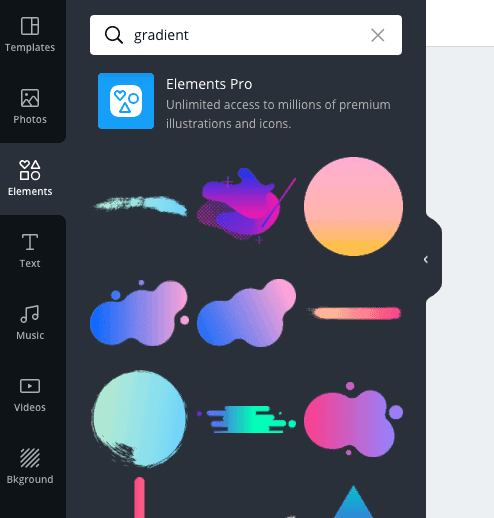
Some of these can make good backgrounds, or use them as one element of your brand identity and logo. Either way, it significantly helps in creating extra dimensions within your logo.
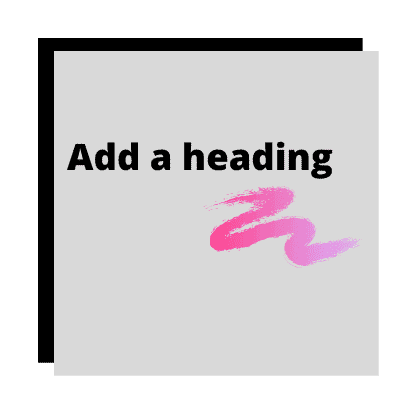

Note that with gradient elements, Canva gives you the option to choose the colors! Look toward the top left corner of the image below.
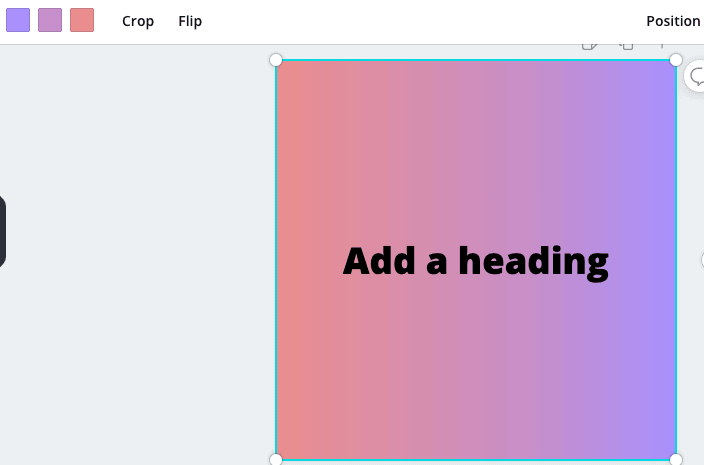
One of the many things we love about Canva is how simple and user-friendly it is. But that doesn't mean you don't get the freedom and control to be as creative as you want. This tool has somehow mastered the balance of simplicity and control.
Other photo editors aren't like this. If they're straightforward, then you can't do much with them. If they give you a lot of creative freedom, then they're typically tough to navigate. It's always one or the other, but never both.
The exception, of course, is Canva.
There's no end to what you can do with it. Whether you're designing a logo, social media graphics, infographics, a presentation, images for your blog or website, YouTube thumbnails, or something else entirely, you can achieve what you're looking for using Canva.
Furthermore, if you are already using eclincher as your social media management tool, the Canva integration is included. It's one less profile that you have to sign in and out of and one less tab to work in.
If you are interested in a trial, eclincher is here to streamline your social media management, bringing everything under one roof. This includes one unified inbox, automation features and capabilities, collaboration features for teams, dynamic personalization for franchises, many other included integrations, an Instagram for business grid, and so much more.
We hope you found this tutorial on how to use the Canva logo maker and general logo and graphic design helpful! Questions? Leave us a comment, and we'll get back to you.
Frequently Asked Questions
How can I create my own logo?
There are a few steps to make your very own logo using Canva:
1) Launch Canva and, click on the "Create a design" button and select the "Logo" option.
2) Choose a template or start creating by clicking on the "Use custom dimensions" option.
3) Add elements to your logo by clicking on the "+" icon on the left side of the screen and selecting from the various design elements available.
4) Use the editing tools on the right side of the screen to customize your logo. You can change the font, color, size, and alignment of your text, as well as add shapes, lines, and icons.
5) Save your logo by clicking on the "Download" button and selecting the file format that you want to use (such as PNG or JPG).
What is the best tool to create a logo?
Canva is a popular logo creation tool because it offers a wide range of features and design elements that make it easy for anyone to create a professional-looking logo. Some of the reasons why Canva is considered the best logo creation tool include:
User-friendly interface, Wide selection of templates, Wide range of design elements, and customization options.
Can I draw my own logo on Canva?
Yes, you can create your own logo using Canva. There are dozens of templates to use which make designing your own logo easy. No need to be a professional designer.
Conclusion
By now, you know that logo design on Canva is a straightforward process, perfect for creating a professional-looking logo for your business or personal brand. With its user-friendly interface and wide selection of professional templates, shapes, and design elements, Canva makes it easy for anyone to craft a logo that truly reflects their brand identity.
Whether you’re a beginner or an experienced designer, Canva's massive library and versatile design features provide all the tools you need to create a logo that’s unique, memorable, and effective. Any good designer will find Canva indispensable for online marketing efforts. Canva is a must-have tool for any business serious about making a strong visual impact.
.svg)
.svg)
.svg)
.svg)

.svg)
.svg)
.svg)

.svg)

.svg)
.svg)

.svg)



.png)
%20(1).png)
.png)





.svg)
.svg)
.svg)

.png)
.png)
.png)
.svg)
.svg)
%20(1).png)
.svg)
.png)


.png)
.svg)
.svg)
.svg)
%20(1).png)
.png)
.png)

.png)
.png)
.svg)
.svg)
%20(1).png)
%20(1).png)
.png)


.jpg)
.jpg)



